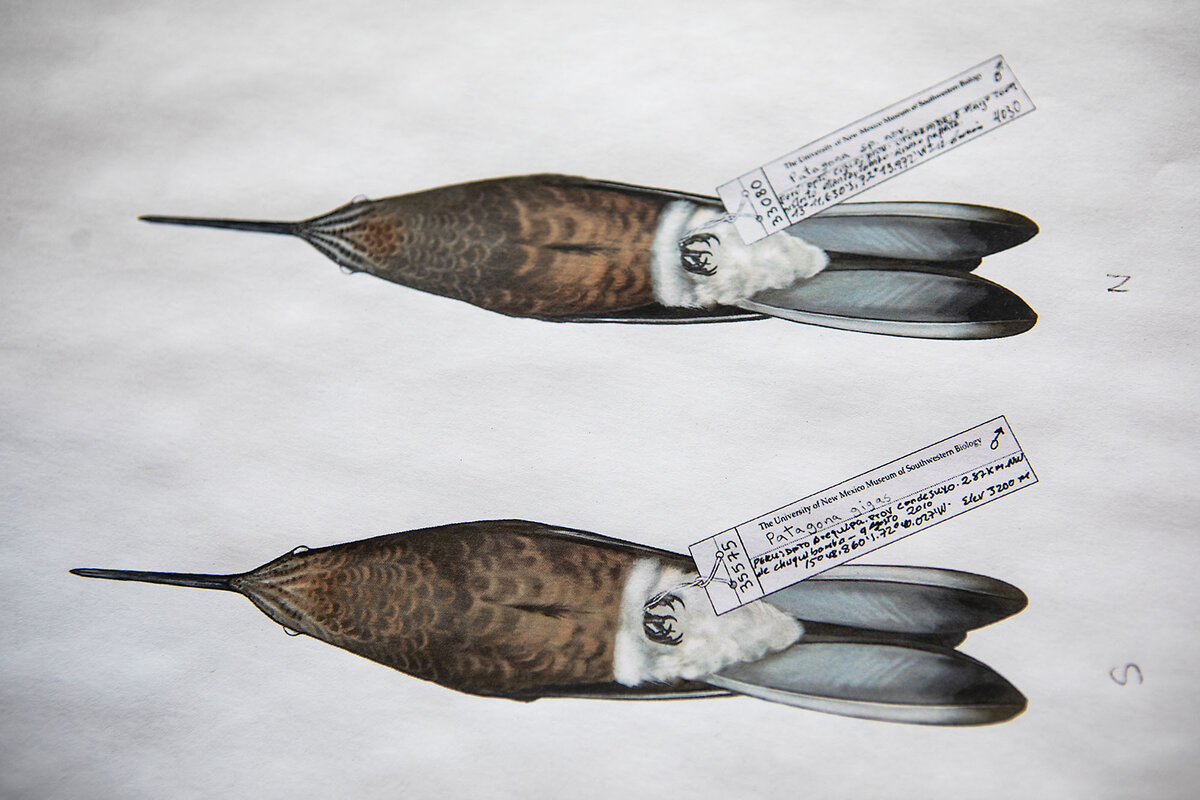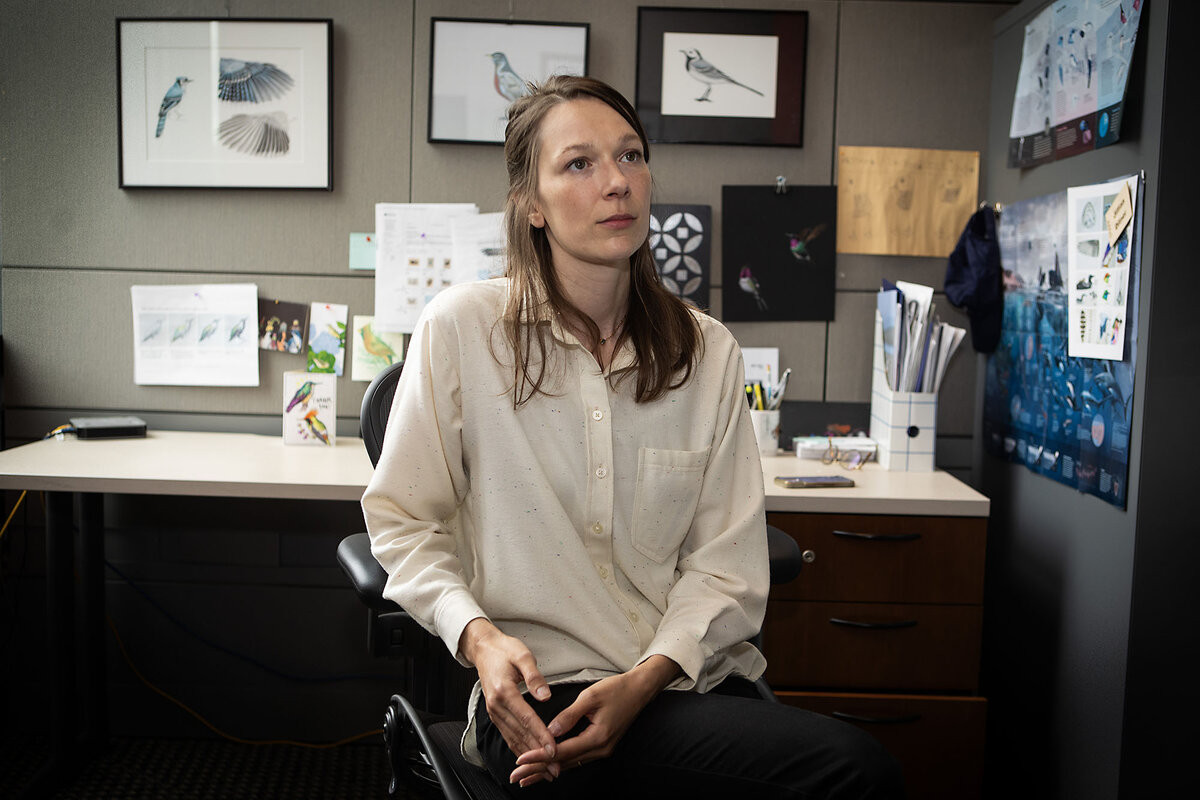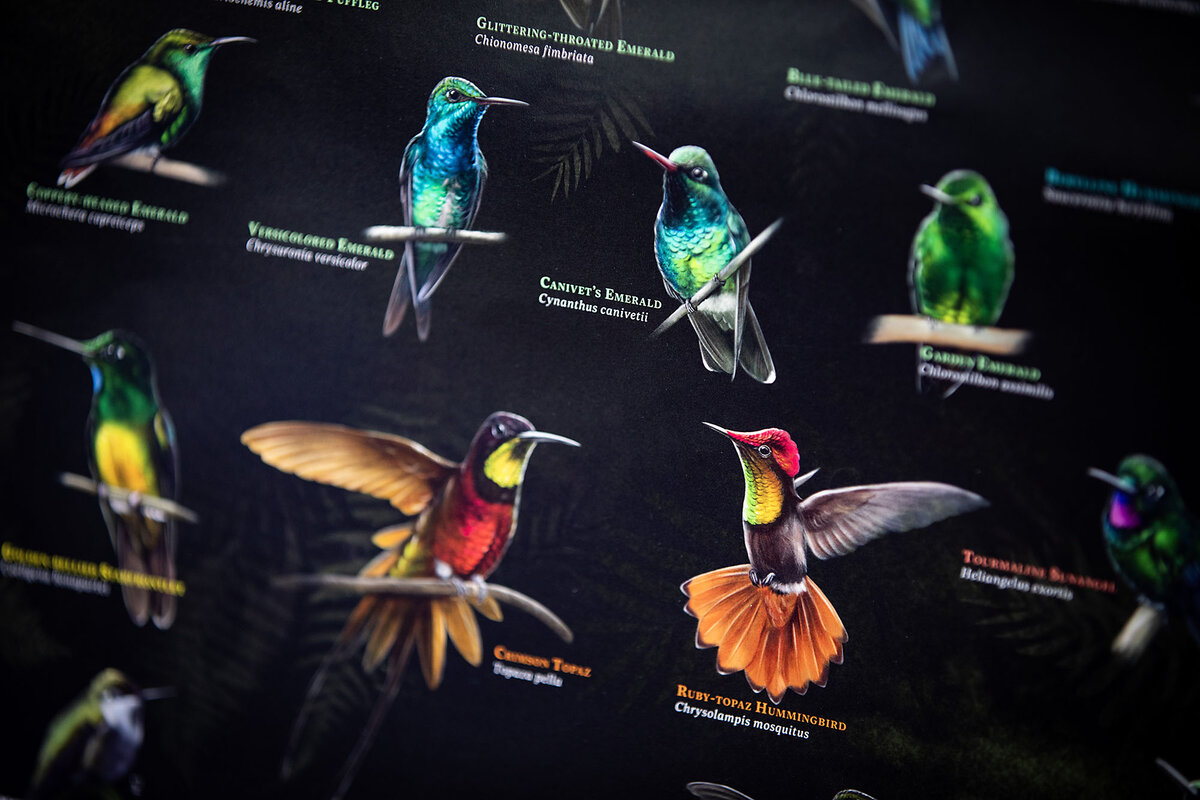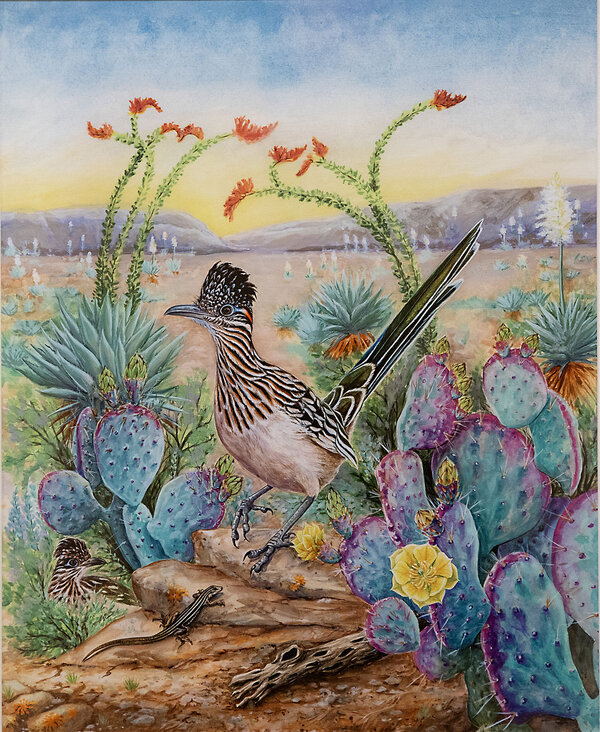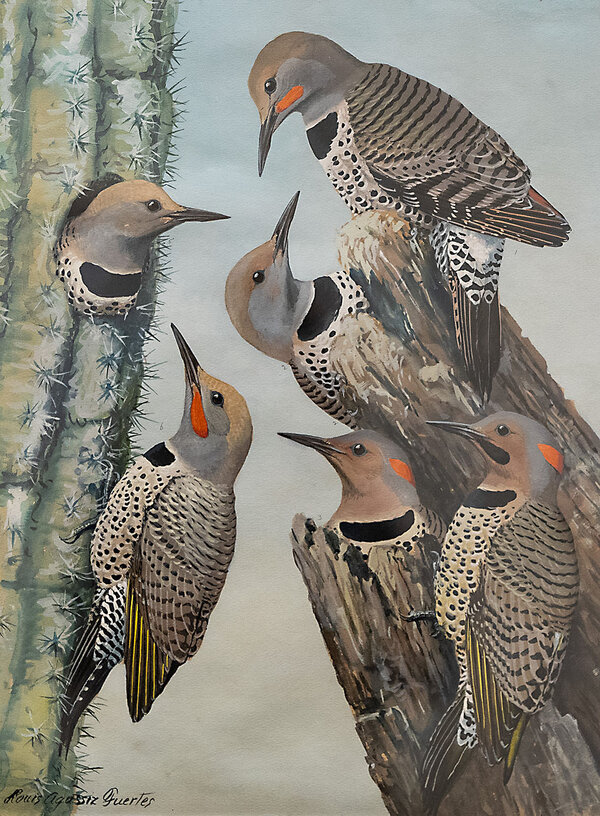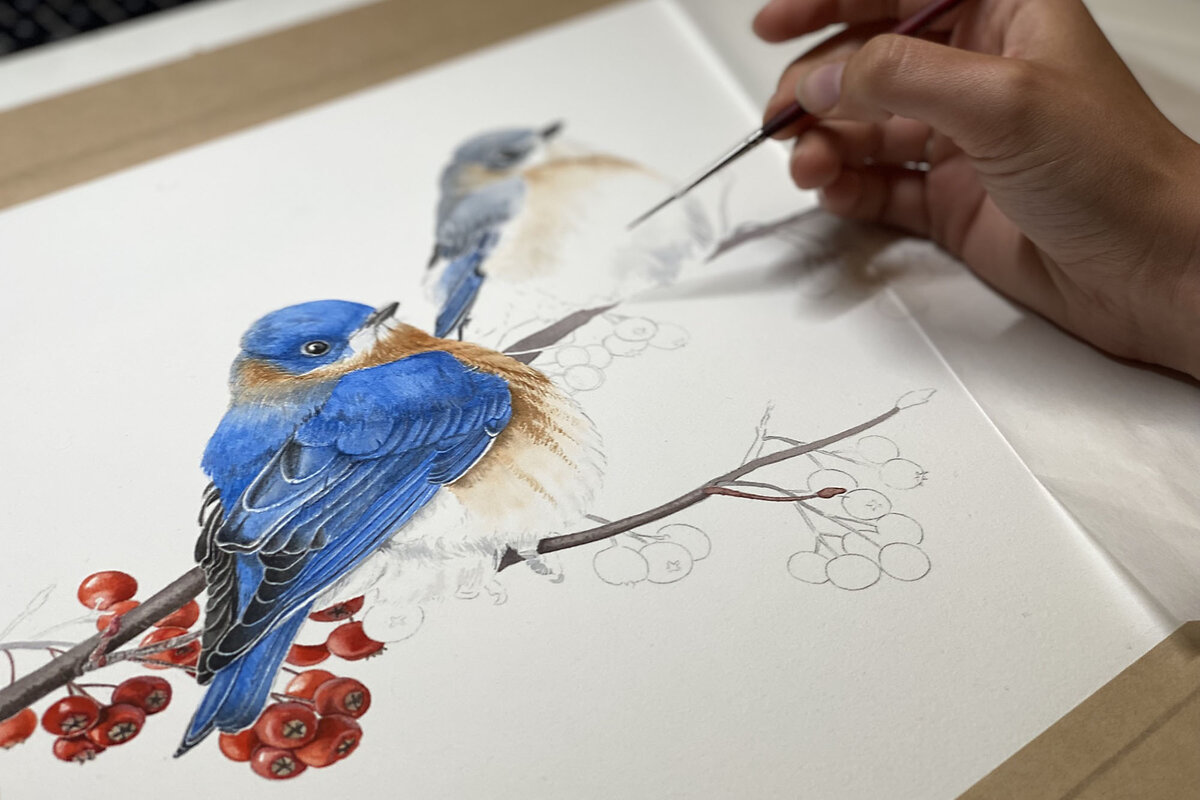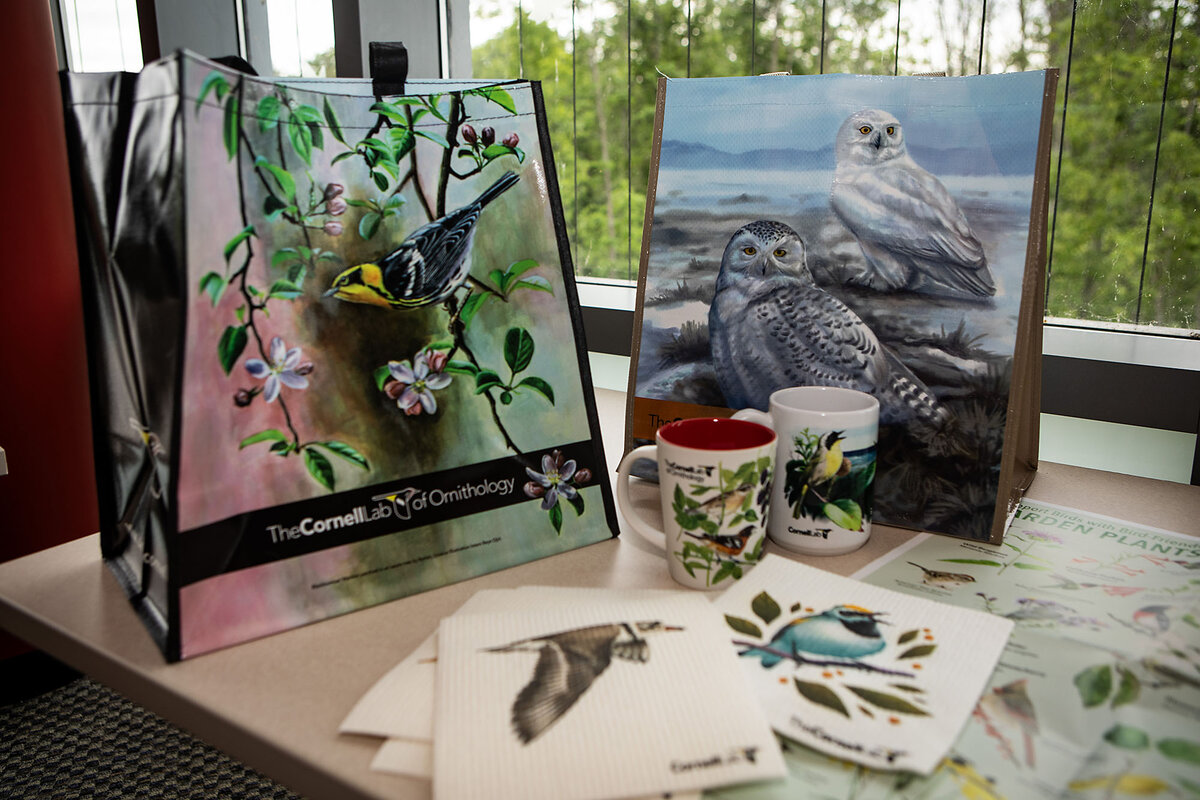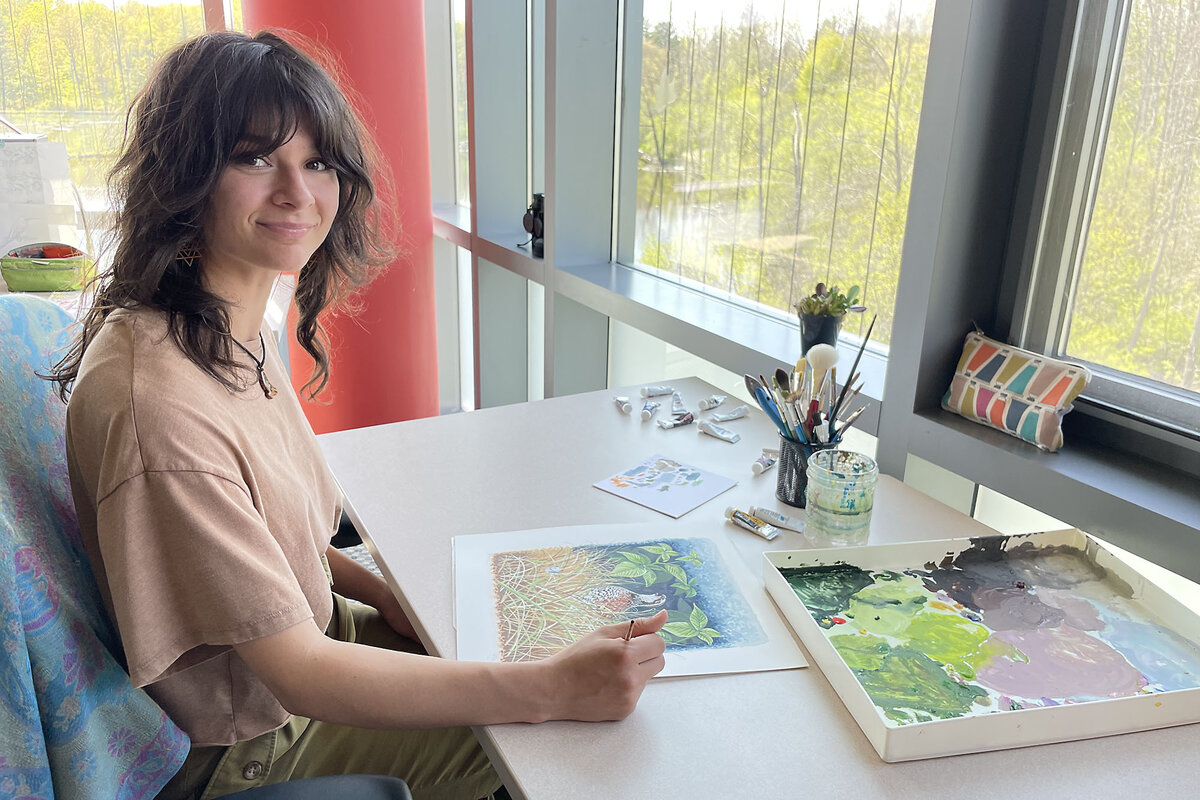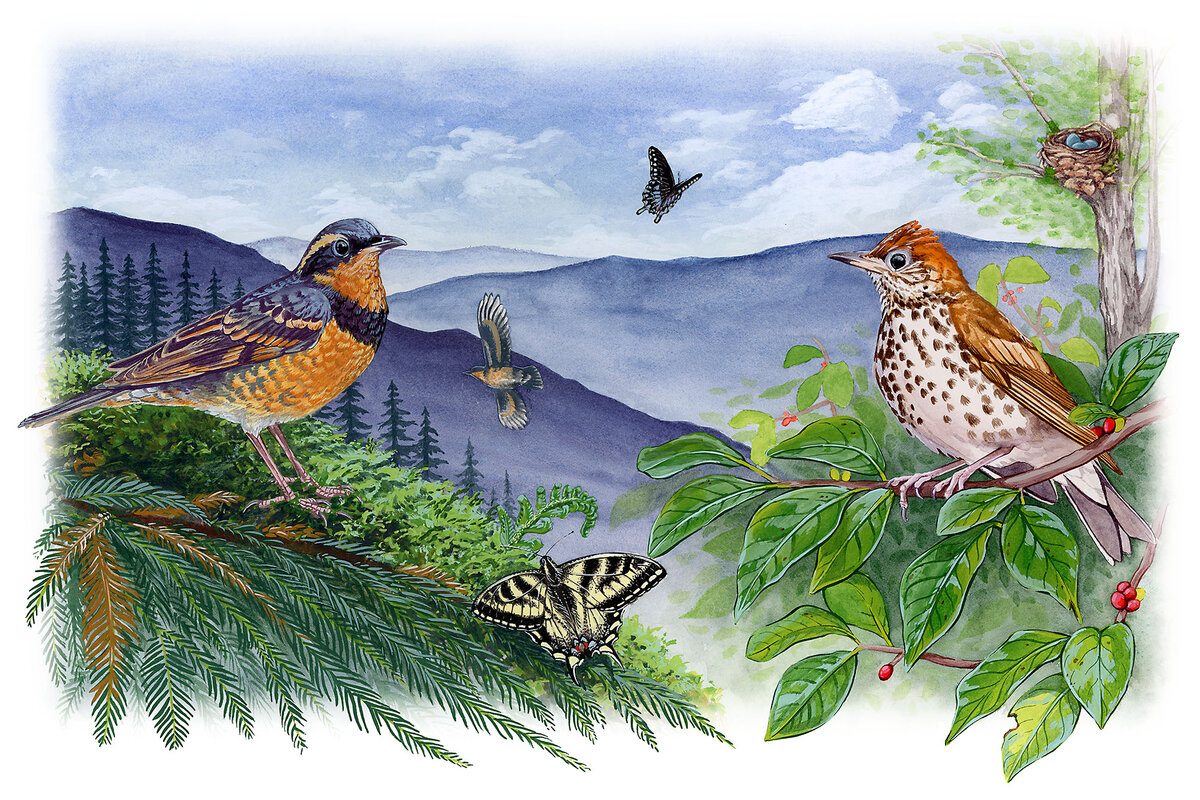How bird illustrators help science soar
Loading...
| Ithaca, N.Y.
When international researchers recently discovered that a population of hummingbirds in South America was actually two distinct species – a finding made after much trekking and tracking and genome sequencing – they called on Jillian Ditner to help explain their work.
Ms. Ditner is a bird illustrator at Cornell University’s Lab of Ornithology. And in her rendering, she could highlight the distinctions between Patagona gigas, the southern giant hummingbird, and Patagona sp. nov., the new northern giant hummingbird.
“Can you see the difference?” she asks, pointing to an image of two birds, belly side up.
Why We Wrote This
A story focused onA popular science illustration fellowship for bird artists aims to highlight the benefits of deep observation in a digital age.
The birds look nearly the same. But look closely, and the plumage on the right has a bit more reddish-brown saturation. There is more distinct coloration around the northern’s neck; a beak that extends just a bit longer.
This is one of the skills of the bird illustrator. More so than a photographer, Ms. Ditner explains, these artists can accentuate and highlight differences in species. They can exaggerate just a bit the ideal features that help reveal an animal’s distinct parts; play with that boundary between reality and understanding.
“Photographs are always going to be limited,” she says. “With scientific illustrations – you can take endless angles of a photograph and put them in one picture … there’s the ability to condense a lot of detail into one visual.”
Ms. Ditner runs Cornell’s unique Bartels Science Illustration Program, a year-long fellowship for bird artists that has seen skyrocketing popularity since its founding two decades ago. (This year, Ms. Ditner received 215 applications for the solo spot; that’s up from a few dozen, she says, when she started in her position six years ago.)
The Bartels program is part of Cornell’s Lab of Ornithology, which many birders in the area just call “the Lab.”
In many ways, the Lab is a high-tech place. Researchers use machine learning and weather data to predict complex migration patterns; they have developed virtual learning tools that have digitized a world of ornithological data. The Lab’s newly renovated visitor’s center will have interactive exhibits that allow humans to manipulate screens to see what birds see – a literal “bird’s-eye view” on the world.
Outside, researchers keep a live camera on a busy bird feeder, which is streamed online, with sound, across the world. Researchers here have also developed an app called Merlin, which works kind of like a Shazam for birds. (Record the bird songs in your backyard, and the app will tell you which species is singing.)
Amid all of this technology, the Bartels program reflects another goal, one that its participants say is equally important for the understanding of our natural world.
At a time when a global library of digital images lives in one’s pocket, when attention is fought over and commoditized, there is something precious about the act of deep observation and the hand-drawn beauty that science illustration requires.
The bird artists at the Lab are specialists in that larger field of science illustration, a profession that includes everything from botanical sketches and renderings of the solar system to medical drawings and wildlife art.
Despite advances in both photography and artificial intelligence, the scientific illustration field is growing, say those who work in the field. According to The Franklin Institute, Philadelphia’s renowned natural history museum, new technology has only increased the need for science illustrators, who can help bring either nanoparticles or galaxies to a comprehensible scale; a handful of colleges have science illustration programs.
Art will “draw people in”
Charlotte Holden, an artist and longtime bird lover, was one of the Bartels Illustrators in 2002. During her time in the program, Ms. Holden worked with researchers, studied bird anatomy, and honed her realism style by combining bird images with illustrations of their native flora. Like many who go through the program, her work appeared in Cornell’s Living Bird magazine, on posters, and on other materials.
“You need people to pick up an article or to pick up a magazine and read about what’s happening in the world,” she says. “Artwork is the way to grab people’s attention. That’s what I try to do – to use artwork to keep people’s interest in different topics.”
Although Ms. Holden has been watching birds ever since she was a child outside of New York City, it was only by drawing, she says, that she began to recognize details like a bird’s different feather groups, or unique colors.
It’s like life, she says. It’s hard to see the details when everything is in motion.
Ornithological art slows us down. It has a long history that blurs science and art and wonder; a moment to pause and appreciate the world around us.
“All I can say is birds are beautiful,” says Ms. Ditner. “They have such a diversity of plumage, such a diversity of behavior. There are some that eat flowers, some that eat mice. They’re basically gems – gems of the sky.”
Bird artists must understand the anatomy of their subjects – their habitats, movements, colors; how millions of years of evolution have brought an individual to be just this way, with just this pattern.
But these illustrators also need to connect with other humans. When the Lab releases, say, a new mug to send to supporters, the images are drawn by hand – a connection between artist and animal, human to human.
“Art in itself is just very inspiring,” says Maria Klos, a 2023 Bartells Illustrator who now lives in California. “It seems to always draw people in.”
One of Ms. Klos’ projects during her time in the program was to draw a pair of life-size American condor wings, which are now attached to one of the Lab’s exterior walls.
Visitors can put their arms up against the image to see how their own “wingspans” measure up; one more moment of art, bird, and human together.
Both Ms. Klos and Ms. Holden have continued their jobs as professional illustrators; both recently put on shows of their art and both say they are inspired to continue drawing nature professionally. The Bartels program has opened doors to new professional contracts, they say, but also a new way of seeing the world.
“It fosters a deeper connection to nature … when you just sit with it and observe it,” Ms. Klos says. “You see things that you might have been overlooking for a long time, or might never have noticed if you didn’t sit down with it and draw it.”





